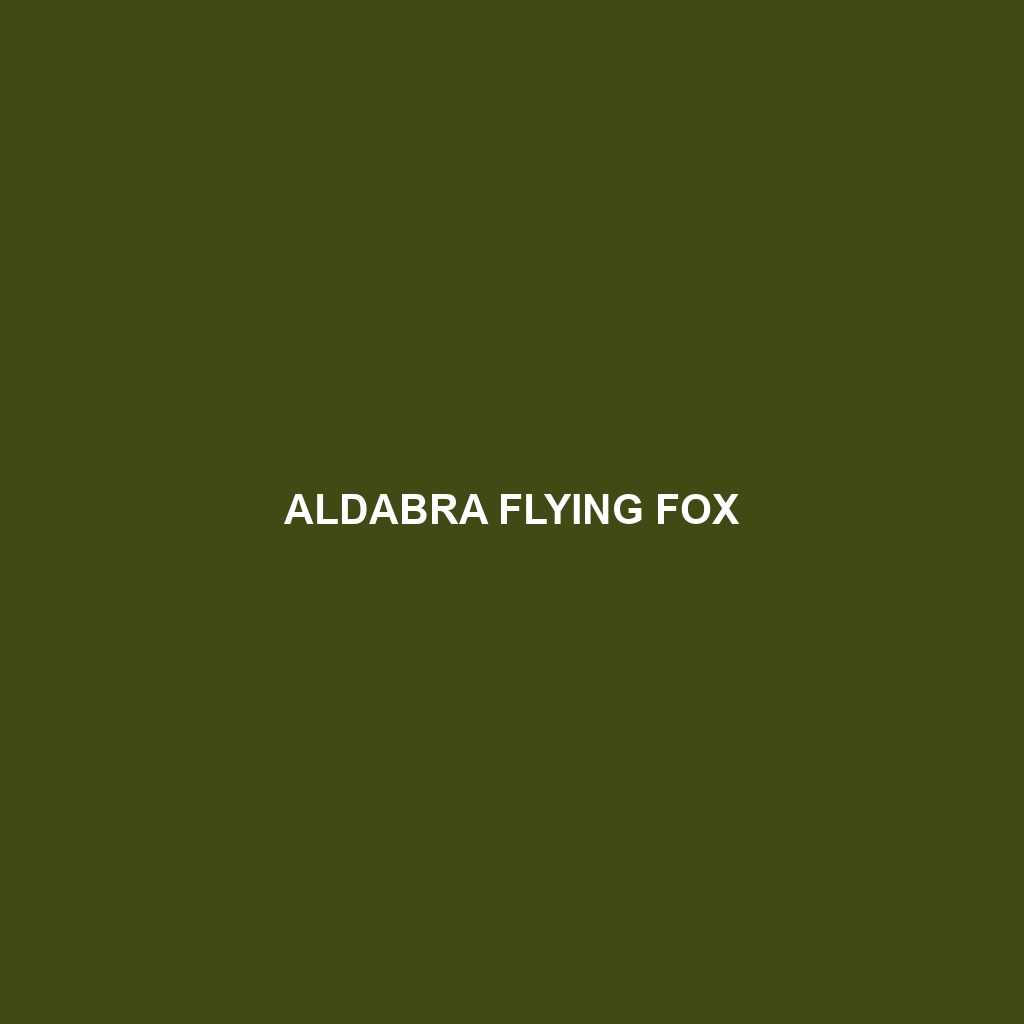Aldabra Flying Fox: A Unique Species Profile
Common Name: Aldabra Flying Fox
Scientific Name: Pteropus aldabrensis
Habitat
The Aldabra Flying Fox is primarily found in the lush, tropical islands of the Aldabra Atoll in the Seychelles. This unique species thrives in coastal and forest habitats, preferring areas with abundant fruit-bearing trees. The warm, humid climate of the region provides an ideal environment for these bats, which rely on the diverse flora for both shelter and food sources.
Physical Characteristics
Aldabra Flying Foxes exhibit notable physical characteristics that distinguish them from other bat species. They typically weigh between 1.2 to 1.5 kilograms and have a wingspan ranging from 1 to 1.2 meters. Their fur is predominantly dark brown or gray, with a strikingly lighter face and underbelly. The large, fox-like face and elongated snout further enhance their unique appearance, with large eyes that help them navigate in low light conditions.
Behavior
Aldabra Flying Foxes are primarily nocturnal creatures, exhibiting active foraging behaviors at night. They are known for their social nature, often roosting in large colonies during the day. The bats utilize their excellent flying abilities to travel long distances in search of food. During mating season, males can be observed engaging in competitive displays to attract females, showcasing their agility and strength.
Diet
The diet of the Aldabra Flying Fox predominantly consists of fruits, particularly the pods and nectar of various flowering plants. They play a crucial role in seed dispersal, as they consume ripe fruits and subsequently excrete seeds at different locations, facilitating plant growth. Additionally, they occasionally feed on flowers, where they act as pollinators, further enhancing their ecological importance.
Reproduction
Aldabra Flying Foxes typically breed once a year, with the mating season varying based on environmental conditions. After a gestation period of around 5 to 6 months, females usually give birth to a single pup, which they carry and nurse for several months. Parental investment is high, with mothers playing a vital role in the care and protection of their young until they are capable of flying independently.
Conservation Status
The Aldabra Flying Fox is currently classified as Endangered, due to habitat loss, hunting, and the effects of climate change. Conservation efforts are essential for maintaining the population and ecological balance within the Aldabra Atoll. Various protected areas have been established to safeguard their natural habitat, and awareness programs aim to reduce human-induced pressures on this vulnerable species.
Interesting Facts
– Aldabra Flying Foxes are known for their impressive sense of smell, which they use to locate ripe fruits in their environment.
– These bats can live up to 20 years in the wild, making them one of the longer-living bat species.
– They are often referred to as “fruit bats” due to their diet and play a vital role in the island’s ecology.
Role in Ecosystem
The Aldabra Flying Fox is an essential component of its ecosystem, contributing to the pollination of flowers and the dispersal of seeds, which promotes biodiversity. By feeding on a variety of fruits, they help maintain the health of the forest and support the growth of new plants. Their presence fosters a balanced ecosystem, highlighting the interdependence of species within their habitat.
